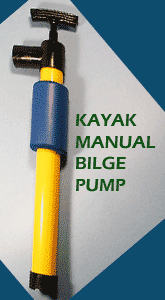
 Custom Search
|
| boat plans |
| canoe/kayak |
| electrical |
| epoxy/supplies |
| fasteners |
| gear |
| gift certificates |
| hardware |
| hatches/deckplates |
| media |
| paint/varnish |
| rope/line |
| rowing/sculling |
| sailmaking |
| sails |
| tools |
| join |
| home |
| indexes |
| classifieds |
| calendar |
| archives |
| about |
| links |
| Join Duckworks Get free newsletter CLICK HERE |
|
|
| May Treasure Chest |
Mixing Epoxy) Chuck Steam BendingHow to steam bend frames using a plastic bag rather than a traditional steam box. ) Louis Home-made Tiller LockI recently designed a home-made tiller lock. You're welcome to have a look at it here on my blog. Joel VIDEO: Build a Fishing Line Recycling Bin This Winter
ANNAPOLIS, Md., March 18, 2014 – It’s hard thinking about fishing when most of country is still frozen solid. However, anglers anticipating the spring bite can make a difference with improving fish habitat this upcoming season by building a fishing line recycling bin with some help from the BoatUS Foundation for Boating Safety and Clean Water. All of the instructions to build a line recycling bin from affordable and easy-to-work-with plastic PVC pipe are explained in a short video at BoatUS.org/monofilament/build-a-bin. The line recycling bins are suitable for any location where anglers gather, such as ramps, piers, marinas, docks and popular fishing areas. Bin builders can also get free stickers to affix to the outside that identify and give instructions on how to use the bin, as well as bilingual “no trash” stickers, simply by sending an email to Cleanwater@BoatUS.com. “Once the weather warms up, you’ll be ready to install the bin and can arrange for clean-outs with help from fishing buddies, clubs, marinas or local agencies,” said BoatUS Foundation Vice President Susan Shingledecker. As the bin fills up, discarded fishing line can often be dropped off at municipal recycling stations, or it can be mailed to the Berkley Conservation Institute where it will be used to make “Fish Habs” - artificial, underwater habitat structures that attract fish. Discarded line shipping instructions can be found at BoatUS.org/monofilament. Epoxy Clean-Up
Clean up is a critical part of gluing, unless you like sanding. Colloidal silica filler makes the epoxy easy to work with when wet, but sanding it later is like sanding rocks, so sharpen your chisel sticks (described in the filleting section) before you get started gluing. Time spent cleaning up squeezed out glue beats a lot of time spent sanding. Taping one edge before gluing allows the squeezed-out glue to be moved onto the tape and then the sticky tape can be removed. Always let epoxy cure hard before removing clamps or screws. This is an excerpt from the e-book, "Epoxy Basics" by Russell Brown provided with permission from the author. WindPaddle SailsPat Johnson Bow Roller
Small anchor in bow roller made from PVC. Scott Roller Setup
This is a photo of my roller set-up for us that forget to bring up our lee board when retrieving the boat. I did have to back the boat off the trailer once because of a side wind. The board rotated down and got caught between the rollers so perhaps a horizontal plank between the two rollers would have prevented that little problem. Jim Young Shop Tips
Good shop tips for the boat builder. I especially appreciated his tips on using a random orbital sander. Gougeon BrothersMany know this, but the hefty tome "Gougeon Brothers on Yacht Construction" is there for the download. MIK Storer Plank WeightHere is a link to a plywood to plank weight chart for various woods. You have to be careful to not confuse "weight per square foot" with "weight per board foot" but otherwise it seems easy to use. Martin |
To comment on Duckworks articles, please visit one of the following:
|
 |









